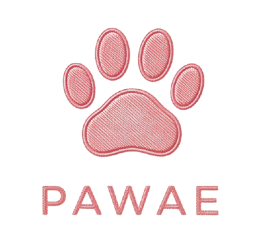In a world increasingly aware of the environmental impact of fast fashion, sustainable fashion is no longer just a trend—it’s a movement. Consumers are demanding eco-conscious choices, and brands are rethinking their production processes to meet those expectations. One of the most beautiful examples of sustainable fashion in 2025 is the rise of eco-friendly embroidered shirts.
These shirts not only showcase intricate craftsmanship and artistry but also represent a commitment to the planet. Whether you’re a fashion-forward shopper or a mindful brand looking to make ethical choices, eco-friendly embroidered shirts are a powerful way to blend style with sustainability.
In this article, we’ll explore what makes embroidered shirts sustainable, why they matter, and how to choose the right ones for your wardrobe.
Why Sustainability in Fashion Matters
The fashion industry is one of the world’s largest polluters. From excessive water consumption to toxic dye usage and textile waste, the environmental cost of clothing is staggering. According to the United Nations, the fashion industry is responsible for 10% of global carbon emissions and 20% of wastewater.
That’s where sustainable fashion comes in—offering a way to reduce these impacts through responsible sourcing, ethical labor practices, and eco-conscious materials. Embroidered shirts, especially when produced ethically, can be a beautiful part of this movement.
What Makes an Embroidered Shirt Eco-Friendly?
Not all embroidered shirts are created equal. Here are the key features that define a sustainable embroidered shirt:
1. Organic or Recycled Fabrics
Look for shirts made from organic cotton, hemp, bamboo, or recycled materials. These fabrics are grown or manufactured using fewer chemicals, less water, and lower carbon footprints.
2. Natural or Low-Impact Dyes
Conventional dyes are one of the biggest environmental hazards in fashion. Eco-friendly shirts often use plant-based, non-toxic, or low-impact dyes that reduce pollution and health risks.
3. Ethical Embroidery Techniques
Hand embroidery done by artisans using fair labor practices is not only sustainable but also supports traditional craftsmanship. Machine embroidery can also be eco-friendly if done using renewable energy and responsible materials.
4. Eco-Friendly Threads
Recycled polyester, organic cotton threads, and even biodegradable embroidery threads are becoming more common in ethical fashion circles.
5. Minimal Waste Production
Brands committed to sustainability often follow low-waste or zero-waste principles, using every piece of fabric or repurposing leftovers into other products.
The Benefits of Choosing Eco-Friendly Embroidered Shirts
✅ Environmentally Responsible
By choosing shirts made from organic and sustainable materials, you’re reducing demand for harmful farming and manufacturing practices.
✅ Support for Artisan Communities
Many embroidered pieces are made by hand in small communities. Supporting these products helps preserve cultural traditions and provides fair wages for skilled artisans.
✅ Long-Lasting Quality
Sustainable embroidered shirts are often built to last, using higher-quality threads and fabrics. This reduces the cycle of fast fashion and promotes a “buy less, choose well” mindset.
✅ Unique Style
Eco-friendly embroidery often includes hand-stitched or limited-edition patterns. That means you get to wear something unique while supporting ethical fashion.
✅ Positive Brand Identity
For brands, offering eco-conscious embroidered shirts helps build credibility, attract conscious consumers, and position your brand as a leader in ethical fashion.
How to Choose the Right Eco-Friendly Embroidered Shirt
Not sure where to begin? Here are some tips to help you shop smarter:
🔍 1. Check the Fabric Content
Always read the label. Look for organic cotton, Tencel, linen, or hemp. Avoid synthetic fibers like polyester unless they’re clearly marked as recycled.
🧵 2. Look at the Embroidery Process
Is the embroidery hand-stitched or machine-made? Is it done locally or outsourced to factories with poor working conditions? Transparent brands will proudly share this information.
🌱 3. Research the Brand’s Sustainability Practices
Choose brands that are transparent about their sourcing, production, and labor standards. Certifications like GOTS (Global Organic Textile Standard) or Fair Trade are good indicators of ethical practices.
♻️ 4. Buy Less, Choose Quality
Instead of buying multiple cheap shirts, invest in fewer high-quality pieces. Look for durability, reinforced stitching, and timeless designs you’ll wear for years.
🛍️ 5. Support Local or Independent Artisans
Whenever possible, support local embroiderers or independent designers who make limited-run or handmade embroidered shirts. This reduces your carbon footprint and supports sustainable craftsmanship.
2025 Trends in Sustainable Embroidered Shirts
As sustainable fashion continues to grow, here are some trends to watch this year:
- Earth-Toned Palettes: Neutral and nature-inspired color schemes using eco-friendly dyes.
- Storytelling Embroidery: Shirts featuring patterns that tell stories of nature, community, or activism.
- Zero-Waste Embroidery: Brands using leftover fabric to create limited-edition embroidered designs.
- Regenerative Materials: Materials like regenerative cotton and mycelium-based textiles are making their way into embroidery.
- Digital Tracking: QR codes on tags that show the entire journey of the shirt—from farm to finished piece.
Final Thoughts
Eco-friendly embroidered shirts are more than a fashion choice—they’re a commitment to a better world. In 2025, embracing sustainable fashion means choosing pieces that respect the planet, uplift communities, and last for years to come.
Whether you’re building a sustainable wardrobe or launching your own ethical brand, eco-conscious embroidery offers a powerful combination of beauty, tradition, and environmental integrity. With the right choices, every thread becomes part of a movement.
